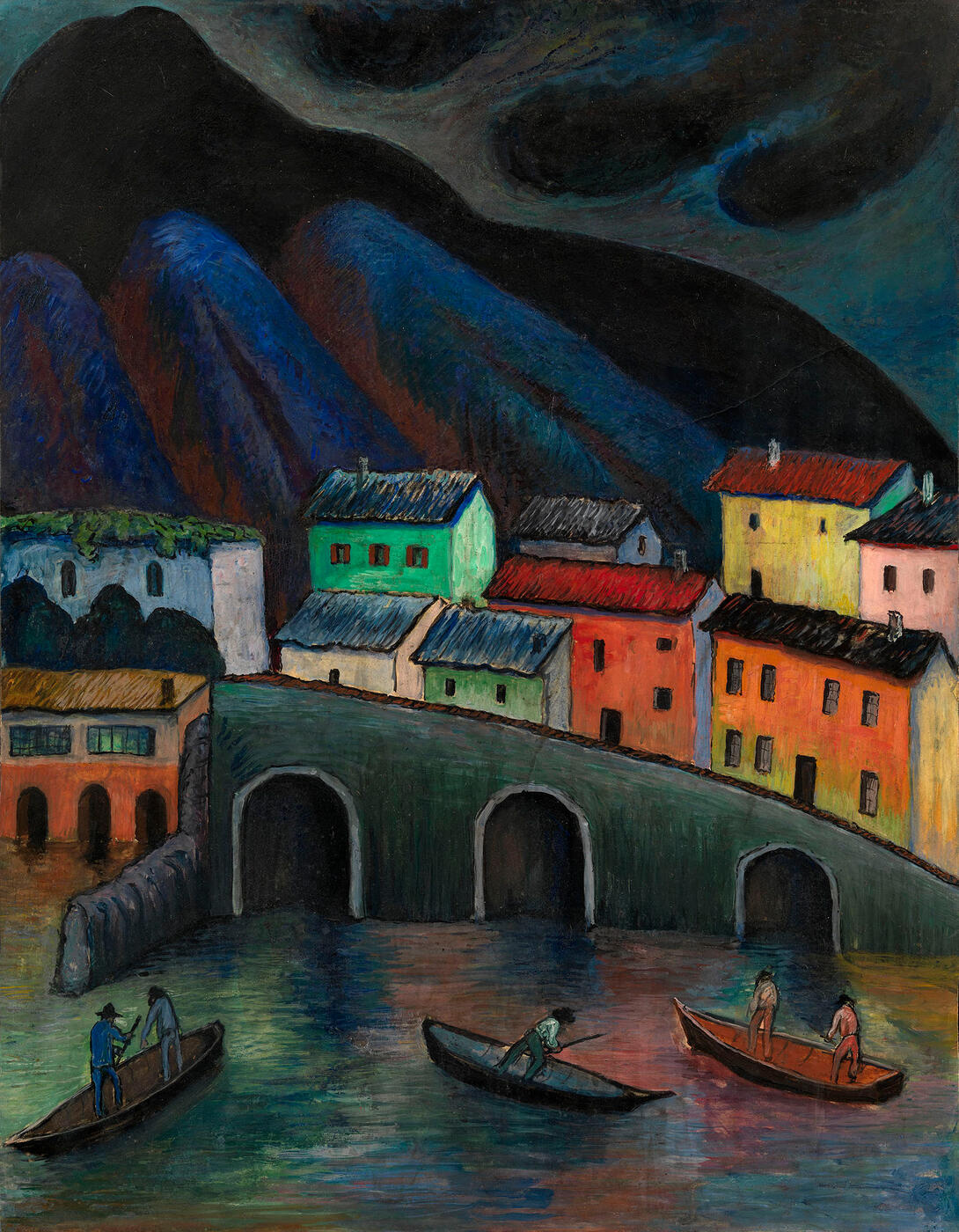MacDougall's Russian Art Auctions 27-30 May 2012
27 May 2012

8. WEREFKIN, MARIANNE (1860-1938)
Nighttime Fishing in Ascona .
Tempera on cardboard, laid on board, 65 by 50 cm.
150,000–200,000 GBP
Painted c. 1923.
Provenance: Estate of the artist, until 1938.
Collection of Else Messmer, Zurich, until 1989.
Private collection, Germany.
Exhibited: Marianne Werefkin. Gemälde und Skizzen, Museum Wiesbaden, Wiesbaden, 28 September–23 November 1980, No. 81.
Il Ticino nella pittura europea, Museo Cantonale d’Arte, Lugano, 11 September–15 November 1987, No. 58 (label on the reverse).
Marianne Werefkin, Leben und Werk, Ascona, Munich, Hannover, Berlin, Bad Homburg, Hamburg, 1988–1990, No. 92.
Literature: Exhibition catalogue, Marianne Werefkin. Gemälde und Skizzen, Wiesbaden, 1980, p. 32, No. 81, illustrated in
colour; p. 134, No. 81, illustrated in black and white.
Exhibition catalogue, Il Ticino nella pittura europea, Lugano, Electa, 1987, p. 115, No. 58, illustrated.
Exhibition catalogue, Marianne Werefkin. Leben und Werk, Munich, Prestel, 1988, No. 92, illustrated in black and white.
B. Fäthke, Marianne Werefkin, Munich, Hirmer, 2001, p. 202, No. 223, illustrated.
Painted in 1923, Nighttime Fishing in Ascona is without doubt among the best examples of Marianne von Werefkin’s
mature work, in which she achieved new artistic heights after a traumatic period in her life.
A major figure in the development of German Expressionism, the work of Werefkin has long been overshadowed
by her protegé and long-term companion, the painter Alexej von Jawlensky. Born into the family of a wealthy Russian general, Werefkin’s artistic talents were encouraged early on in her life by her mother, who was
also a painter. She took private lessons in St Petersburg under Ilya Repin, who was full of praise for her early, Realist paintings. Werefkin later wrote: “The great Realist Ilya Repin was delighted with my things… I admired
him a lot, but we never agreed. At that time I was called the Russian Rembrandt, I exhibited at the famous Itinerant Exhibitions […] I received brilliant reviews and I despaired. The Realist world was as strange to me as
the Romantic. I had other goals in mind.”
It was through Repin that Werefkin met Jawlensky in 1891, an event that would change her life forever. In 1896, they moved to Munich and Werefkin gave up her own work in order to devote herself entirely to Jawlenky’s career. It was only in 1906 that she again took up painting, influenced by Gauguin, Munch, the Nabis and the Fauves. Werefkin spent the summer of 1908 in Murnau, painting together with Jawlensky, Gabriele Münter and Wassily Kandinksy. The following year they founded the Neue Künstlervereinigung München, which prefigured Der
Blaue Reiter.
The present work depicts the Swiss town of Ascona located on the shores of Lake Maggiore, where Werefkin settled
in 1918. Forced to leave Germany at the beginning of the First World War, Werefkin had lost everything. Despite these difficulties, she found new creative energy which allowed her to paint some of her best works. Her paintings became more narrative and lyrical, and acquired a new depth of meaning. Nighttime Fishing in Ascona, which has been included in many major exhibitions of the artist’s work, epitomizes this extremely fruitful period
in Werefkin’s career.
Notes on symbols:
* Indicates 5% Import Duty Charge applies.
Ω Indicates 20% Import Duty Charge applies.
§ Indicates Artist's Resale Right applies.
† Indicates Standard VAT scheme applies, and the rate of 20% VAT will be charged on both hammer price and premium.